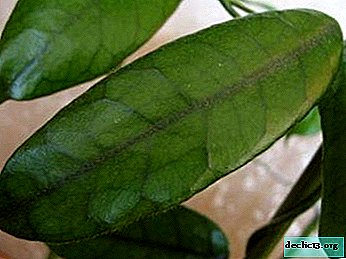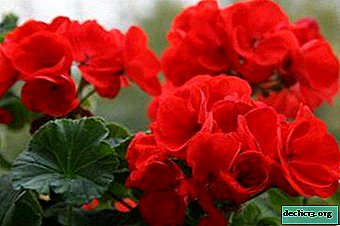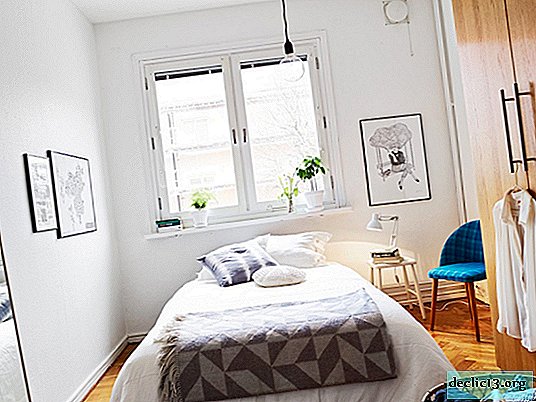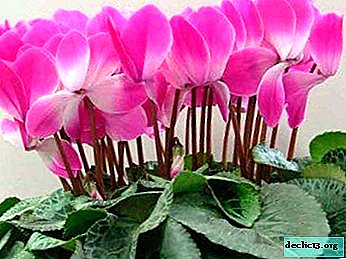What diseases and pests affects homemade lemon and how to help the plant?
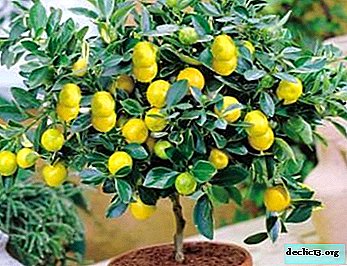 Home-grown lemon is quite resistant to pest attacks and diseases of various etiologies.
Home-grown lemon is quite resistant to pest attacks and diseases of various etiologies.
Nevertheless, this plant sometimes has to experience the influence of ailments, so the information on how to recognize the disease by the appearance of the lemon and what measures to take is very relevant for the owners.
In the article, we will analyze in detail such diseases as leaf mosaic, citrus cancer, tristeza, scab, homosis, fungus, anthracnose and others.
Description of viral and fungal infections with photos and how to treat them
Pathogens of this group of diseases can be transmitted by air, through contaminated soil or water during irrigation. Most often, weakened plants are susceptible to infection, therefore, when growing a lemon tree, it is necessary to create all the necessary conditions for it to fully develop and conduct regular thorough examinations in order to detect areas affected by the disease in time.
Sheet mosaic
The characteristic signs of this disease caused by viruses are the appearance on the leaves of dark or light strokes that visually resemble a mosaic.Leaf plates gradually lose their shape, and the growth of the tree slows down. To cope with the disease will help establish a regime of irrigation and top dressing, as well as careful adherence to all recommendations for care.

Citrus cancer
Brown spots appear on the fruits and leaves of the affected plant. If the disease has entered the main phase, the leaves fall off, lemons acquire an ugly shape and the tree gradually dies. It’s impossible to cure citrus cancer the disease is of a viral nature. To prevent it in spring, the plant is treated with fungicides based on liquid copper.

Tristeza
It manifests itself in the form of falling leaves, dying off bark and twigs. A viral disease and an already affected plant cannot be cured.
So that the lemon tree does not become a victim of three hundred, you need to develop a strong immunity from it.This is achieved by systematic care, according to all recommendations.

Gomoz
The disease has a bacterial nature and is characterized by the fact that the branches and trunk of the plant are covered with red-brown spots, elongated.The bark under these spots quickly dies and becomes covered with cracks. From the cracks oozing sticky golden discharge that quickly solidifies.

The causes of the ailment can be:
- excessive humidity;
- strong deepening of the trunk;
- lack of phosphorus and potassium;
- excess nitrogen in the soil;
- as well as soil contaminated with fungal spores.
Homosis can be cured by cutting off all the spots from the bark of the trunk and treating them with a medium-strength manganese solution. Further, the places of cuts must be covered with grease from a garden var. Treatment should be repeated until spots on the bark of the trunk cease to form.
If branches are stained, they should be completely cut and destroyed.Anthracnose
Affected by this fungal disease, the leaves and buds of a lemon tree turn yellow and fall. Twigs gradually die off, and the fruits are covered with red spots. To destroy the fungus, the affected branches must be cut and destroyed, and a three-fold treatment of the lemon with a fungicidal preparation.

Scab
A disease of fungal nature, covering the leaves of young lemons with transparent spots with a yellowish tinge, which gradually turn into pink-gray growths.The growths spread along the leaf and destroy it along with the shoots. The fruits are covered with spots of orange color, which eventually become red-brown. The fruits fall. So that the plant does not die, all affected areas are removed and the plant is treated with fungicide.

Soot fungus
First appears on the leaves, and after some time on the branches and trunk of the tree in the form of a dark plaque. The disease prevents the full development of the plant, slowing its growth.
To get rid of the sooty fungus, the coating is washed off with warm water and treated with fungicides in the tree.After the procedure, the plant must be placed in a well-ventilated area.

Wartiness
The causative agent is a pathogenic fungus.
- The leaves become covered with spots of a yellowish tint, which gradually turn into gray formations similar to warts.
- On the shoots, they are converted into growths and the shoot dies.
- Fruits are covered with brown spots, ovaries fall.
The disease is provoked by high temperature and humidity. To cure the plant, the affected areas are cut and burned, and the tree is treated with Bordeaux liquid.

Diseases due to care errors at home
The causes of these homemade lemon problems lie in improper care, and the treatment consists in the speedy correction of errors.
Melseko
Illness caused by lack of lighting. Lemon shoots dry up, and the leaves fall off from the ends of the branches.
You can try to cure the lemon by adjusting the light mode and observing the state of the tree.If it continues to hurt - you have to resort to at least - destruction.

Root rot
Failure to comply with the irrigation regime and the introduction of excessive moisture leads to rotting of the roots of the lemon tree.
To save the plant, you need to remove it from the tank, cut off all the rotten roots and move the lemon into the disinfected soil.The plant must be placed on a light windowsill and not watered for a week, only wipe the leaves with wet gauze or a sponge.

Pests
Shield
A harmful insect is located on the inside of the leaves, gradually moving to the outside. The affected plant suffers from reduced immunity and dries.

Common aphid
Pest colonies attack young shoots that are not covered with bark, sucking juices out of them. Leaves curl up and die.

Spider mite
It affects young twigs and leaflets that fold and a web appears around them.

Root aphid
It lives in contaminated soil and affects the roots of the lemon.

How to deal with pests of indoor lemon, see in this video:
What problems do plants often have and why?
Leaves fall
- A lemon tree can discard foliage if the applied top dressing is excessive for it.
- Also, this symptom is characteristic of fungal infections and may indicate that it is necessary to reduce excess watering.
- The cause of leaf fall can also be:
- lack of lighting;
- dry air or fever;
- watering with cold or chlorinated water.
For more information on how to help lemon dropping leaves, we recommend watching the video:
Ovaries fall
- The reason lies in the lack of manganese or boron. It is necessary to analyze the composition of the applied dressings and add the missing element to their composition.
- Also the cause may be anthracnose fungal disease.
Do not turn yellow fruits
The fruits of the lemon tree, which do not change their green color for a long time, are in fact not a pathological manifestation. The plant is healthy, just indoor lemon has a long ripening fruit. In some varieties, the terms can reach up to seven months.
Leaves turn yellow
If small yellow dots appear on the leaves first, and then the entire leaf plate turns yellow, this indicates a lack of nitrogen.It is necessary to adjust the composition of top dressing in such a way as to bring the content of this element to the recommended norm.
Become sticky or stain
 If the leaves to the touch give the impression that they were sprayed with sugar syrup or sticky spots appeared on them, this is a signal that the plant is affected by a scale.
If the leaves to the touch give the impression that they were sprayed with sugar syrup or sticky spots appeared on them, this is a signal that the plant is affected by a scale.
Sticky plaque is a product of the life of an insect. The fight against the pest must begin immediately after the first symptoms are detected, otherwise a sticky coating can develop into a soot fungus.
Tree discards fruit
It’s very disappointing when the fruits are already tied, but the tree began to drop them, so it is extremely important to know why this can happen and what to do in this case.
- As a rule, by dropping the fruit, the tree reacts to a sharp change of scenery. If, during fruiting, transfer the plant to another window or to another room, all lemons can fall.
- Also, the reasons may lie in the fact that the plant is too young and does not have the strength to ripen the fruit.
- Or the soil in the pot is not fertile enough.
- A lemon tree can also shed fruits due to lack of lighting, insufficient watering, or if too many ovaries have formed which the plant cannot cure. Correcting the situation will help adjusting the light mode, as well as adjusting the watering schedule. During the formation of the ovaries, the excess should be cut off, and the tree should be completely stress free during fruiting.
Indoor lemon diseases rarely occur but it can be very diverse. It is important to remember that even if a tree has not known any diseases for several years, an ailment can fall upon it completely unexpectedly. Having an idea of the symptoms of a particular disease, it is more likely to have time to respond to a change in the well-being of the lemon tree and to take steps to save it.

